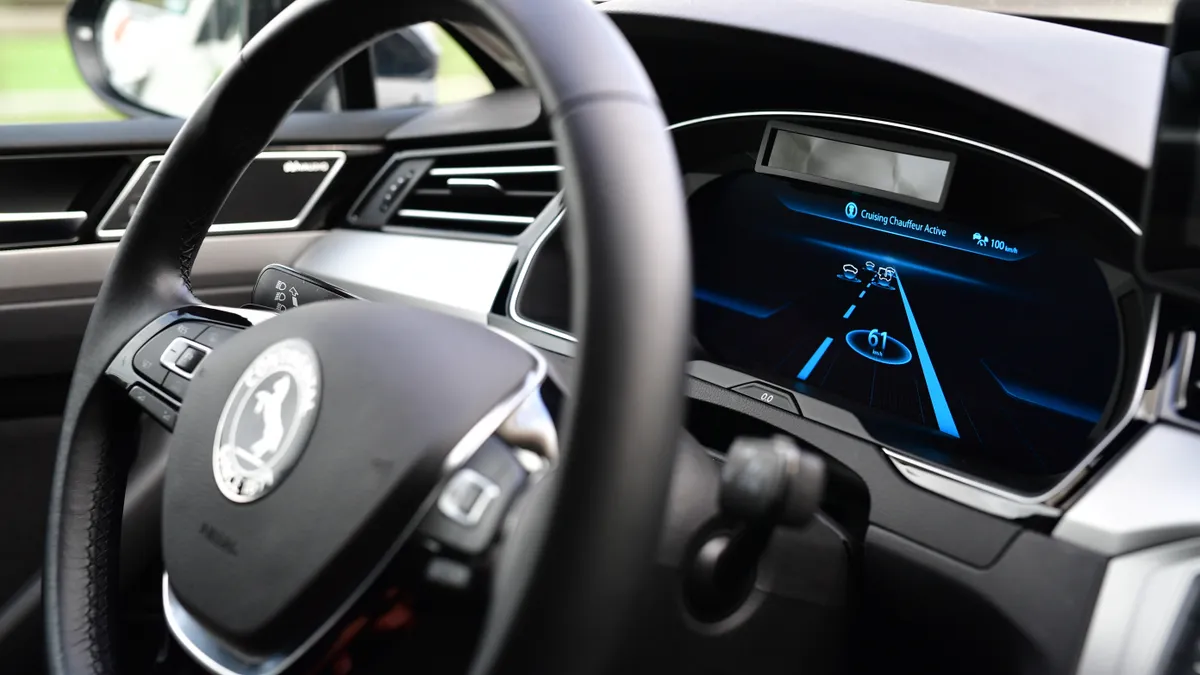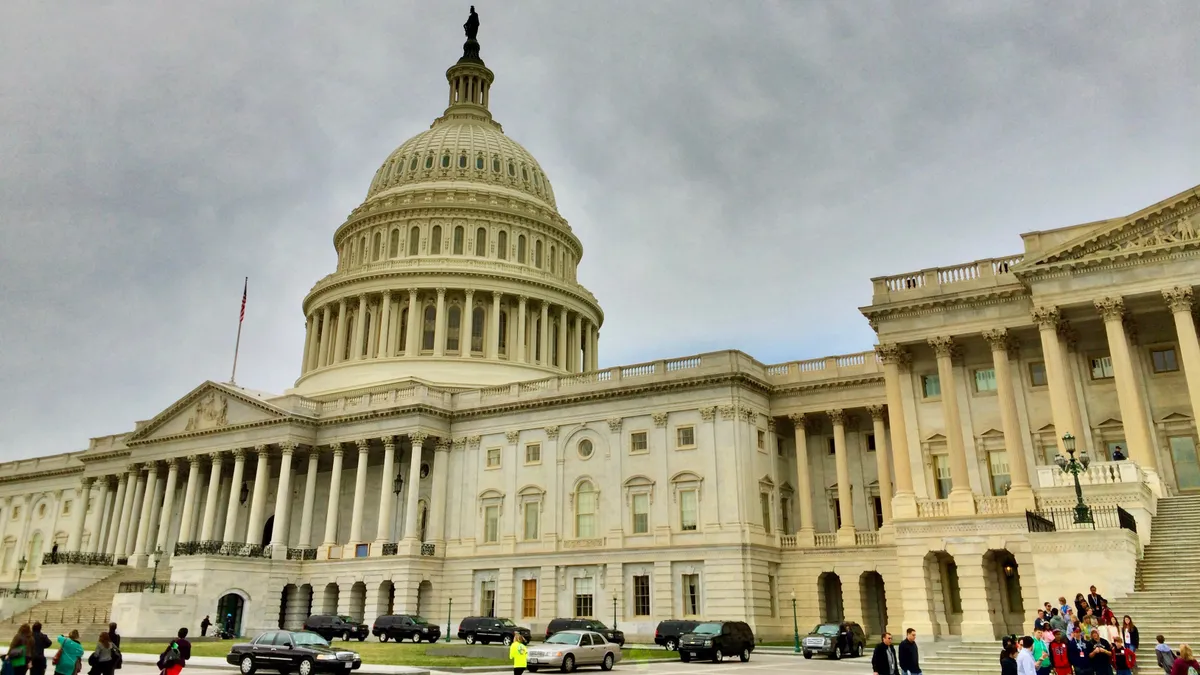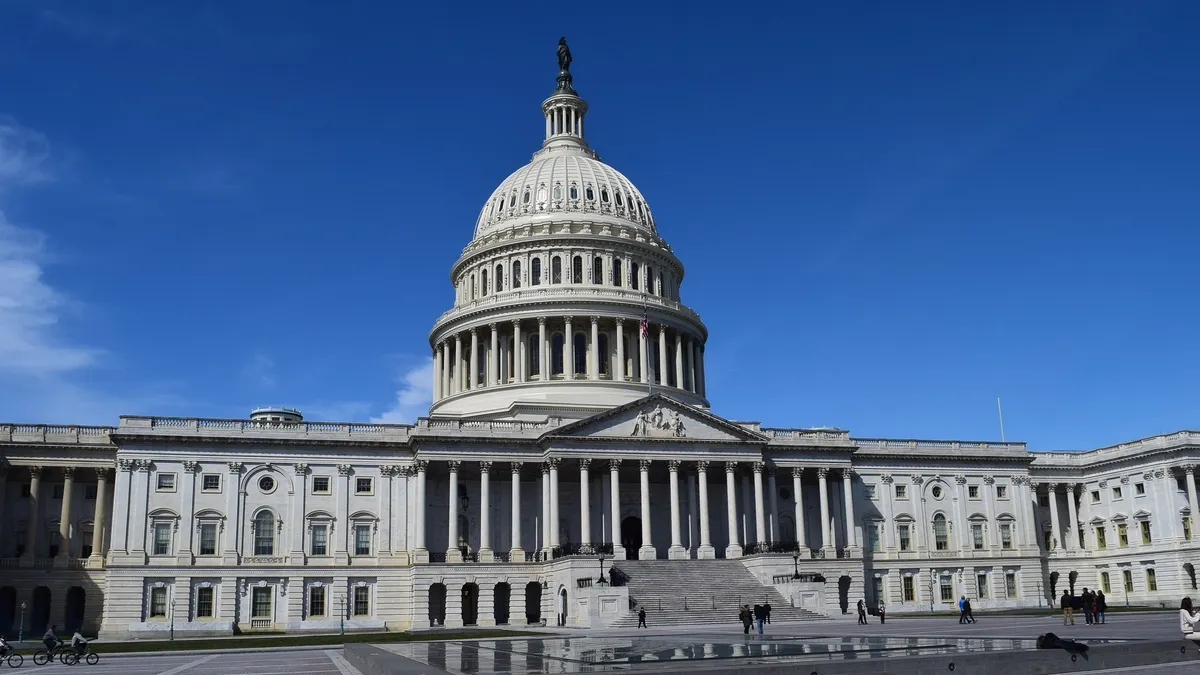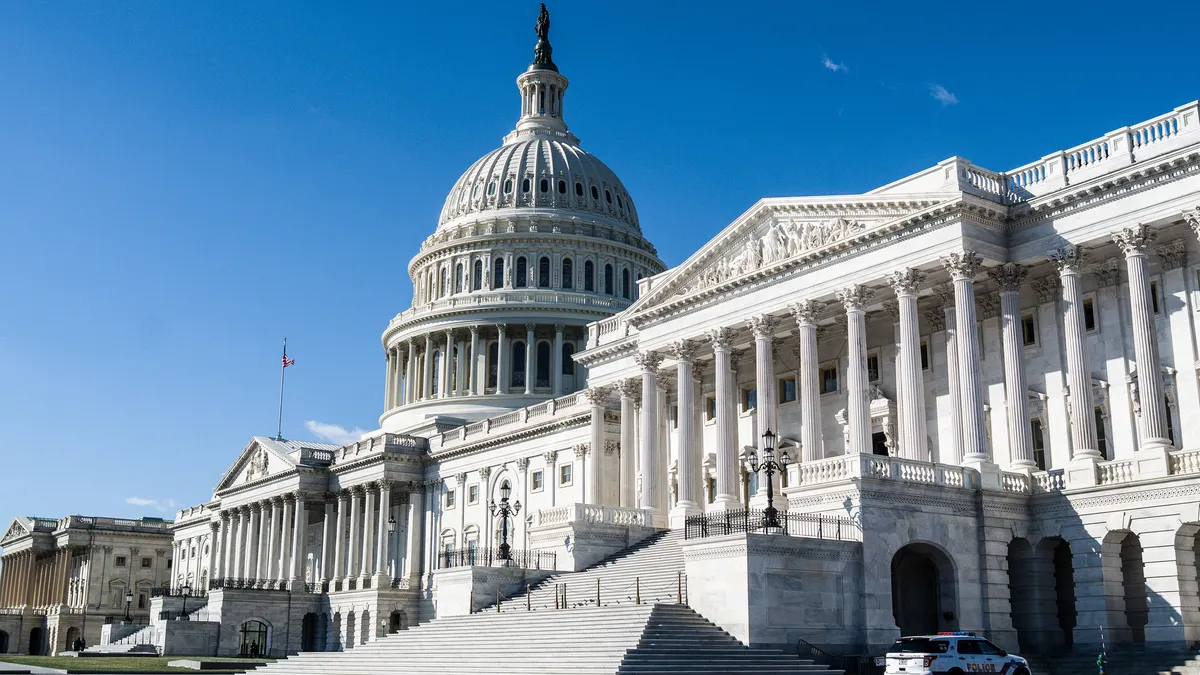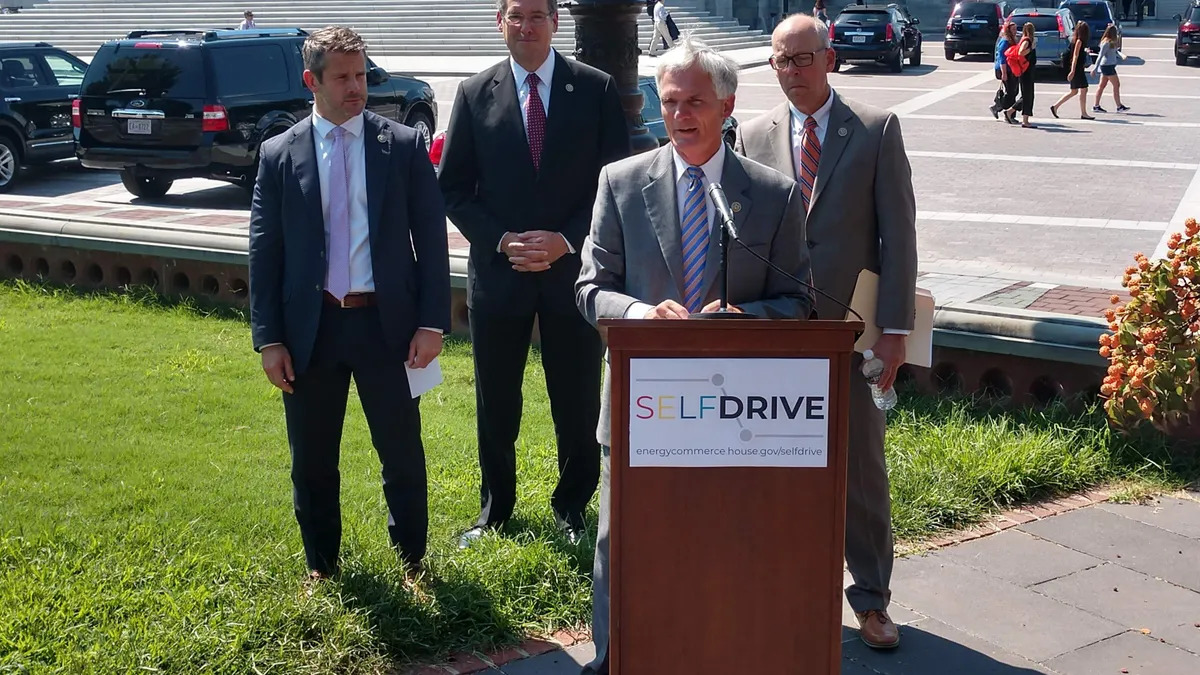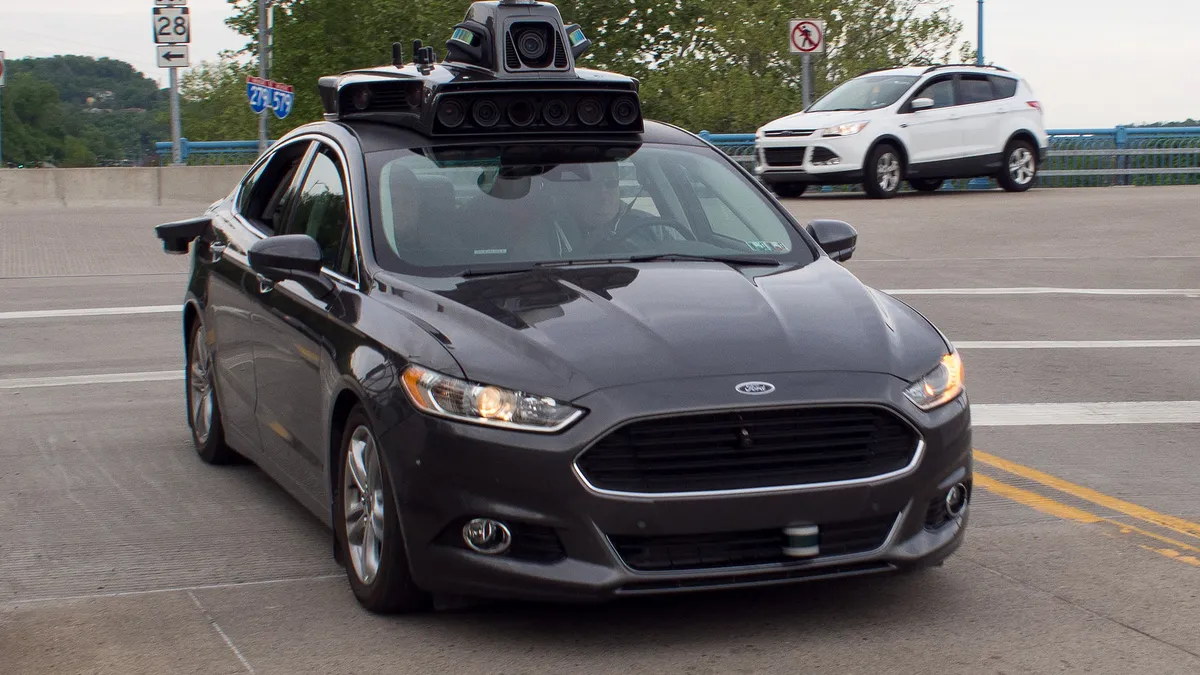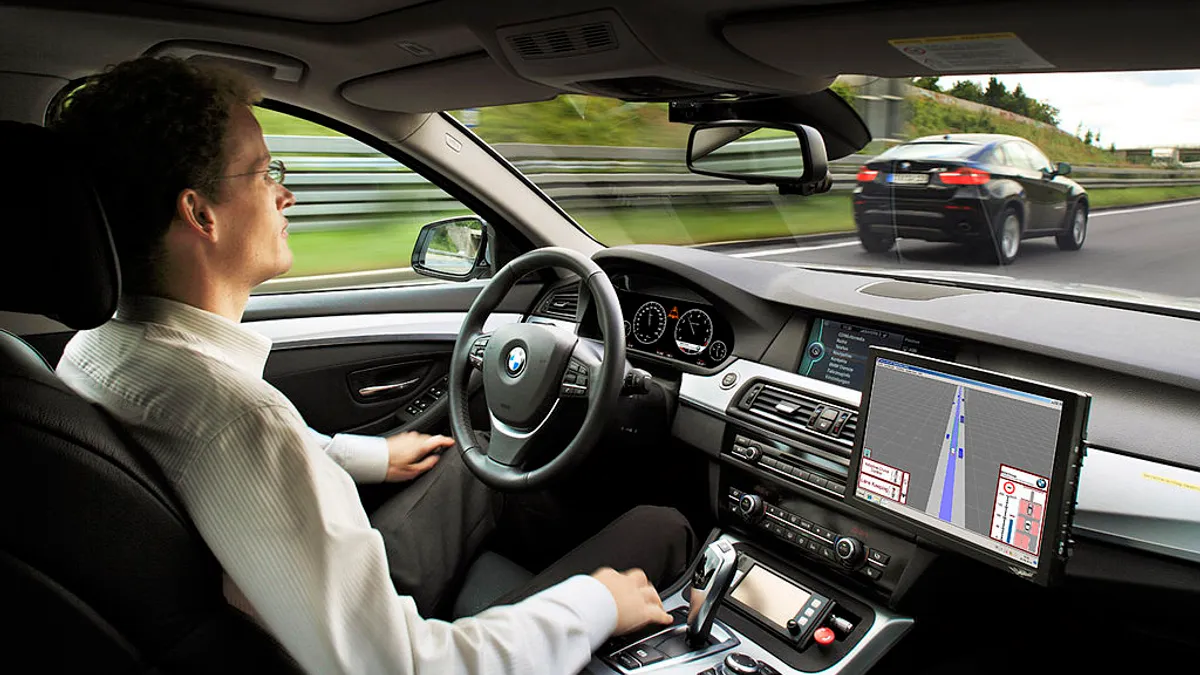Amid skyrocketing road deaths in the United States, members of Congress emphasized at a hearing Tuesday the role autonomous vehicles (AVs) can play in improving safety but called for other technology to be implemented in the short term.
Lawmakers remain determined to encourage faster AV development and deployment and to legislate on the nascent technology. But with advanced driver assistance systems (ADAS) available to help reduce serious crashes, automakers must offer that technology as standard, some said.
The debate takes on renewed importance as organizations including the Governors Highway Safety Association and the National Safety Council have projected that fatalities on the nation’s roads climbed in 2020, even as driving dropped precipitously due to the coronavirus pandemic.
"[The] sad context here is that nearly 40,000 people die each year in traffic accidents, and in almost every case, the denominator is the same — human error," subcommittee ranking member Rep. Gus Bilirakis, D-Fla., said during the hearing before the House Energy and Commerce Committee's Subcommittee on Consumer Protection and Commerce. "The preventable loss of life on our roads is tragic and unacceptable."
Standardizing ADAS a first step
The National Transportation Safety Board has called for adding crash avoidance technologies like ADAS to vehicles since 2016, but many automakers do not offer the technology as standard on new cars, instead offering it as an option.
ADAS, which includes rearview cameras, lane-assist warnings and anti-lock braking, has been credited for dramatically reducing crashes. But in a letter to the committee ahead of the hearing, Advocates for Highway and Auto Safety (Advocates) said ADAS is "hamstrung" by automakers refusing to include it as standard and the National Highway Traffic Safety Administration (NHTSA) not requiring it by law.
During the hearing, Jason Levine, executive director of the Center for Auto Safety, said debates about vehicle technology too often veer toward discussion of AVs and the future, as opposed to how ADAS and other innovations can be used now. Levine cited the example of the European Union, which experienced less than 19,000 vehicle-related deaths last year and has been more consistent than the U.S. on ADAS requirements.
"[Instead] of a debate about solutions to an actual crisis, victims must suffer through another round of Chicken Little commentary decrying that if we do not immediately put all our eggs in the driverless vehicle basket, the U.S. will lose out in the race to be first to transportation and environmental nirvana," he said.
Rep. Frank Pallone, D-N.J., who chairs the full House Energy and Commerce Committee, asked Levine if automakers can be trusted to "police themselves" and implement new technologies. Levine said they cannot and called for NHTSA to play a stronger role. NHTSA has responded to calls for action with a new campaign to educate drivers on ADAS.
"Current vehicle descriptions such as 'Autopilot' can mislead consumers into thinking their cars have self-driving capabilities when they do not."

Rep. Gus Bilirakis
R-Fla.
Renewed calls for AV regulations
Despite the potential of self-driving vehicle technologies to reduce vehicle crashes, concerns persist. Lawmakers and regulators warned that automakers can misleadingly market their technology. Tesla is under investigation by the California Department of Motor Vehicles for advertising its cars' Full Self-Driving feature as being fully autonomous when it does not meet the legal definition of being fully autonomous.
Bilirakis pledged to introduce the Raising Objectivity standards in Advertising Driving Systems (ROADS) Act, which he said would examine how automakers market their vehicles' driving systems.
"Current vehicle descriptions such as 'Autopilot' can mislead consumers into thinking their cars have self-driving capabilities when they do not," Bilirakis said. "Much the way the public had to understand how anti-lock brakes work, they need to understand the benefits and limitations of the current generation of technologies, and that certainly begins with properly describing them."
It is not the first time Congress has wanted to regulate AVs on a national basis.
The House passed the Safely Ensuring Lives Future Deployment and Research in Vehicle Evolution (SELF DRIVE) Act in 2017. But the companion American Vision for Safer Transportation Through Advancement of Revolutionary Technologies (AV START) Act died in the U.S. Senate amid concerns around safety and labor impacts.
Subsequent efforts to revive the bills then went nowhere, except with the release of much-criticized draft text, and legislating lost steam with the onset of the coronavirus pandemic. And this year, U.S. Sens. John Thune, R-S.D., and Gary Peters, D-Mich., looked to attach an amendment to the Endless Frontier Act to give NHTSA the ability to initially exempt 15,000 AVs per manufacturer from federal safety standards, but they later withdrew it.
In the meantime, NHTSA and the U.S. Department of Transportation unveiled guidance on advancing AV deployment in early 2020 but offered little in the way of regulation or rule making. Subcommittee Chair Rep. Janice Schakowsky, D-Ill., said that hands-off approach is no longer acceptable.
"Given the increase in deaths, at this point a deregulatory approach is really unwarranted," she said. "The federal government needs to create standards to ensure the safe deployment of technologies that are available now and in the future. Standards will create the certainty that is needed to accelerate innovation."
Several of those present at the hearing warned that if the U.S. does not lead the way on AV development and deployment, it risks falling behind China.
"China's ability to catch up with our advances has been aided in part by their relatively lax regulatory environment," said Raj Rajkumar, a professor in the Department of Electrical and Computer Engineering at Carnegie Mellon University. "While we should not aim to mirror their regulatory model, we must recognize what is at stake in the overall race and seek to out-innovate them in the core technologies that will ultimately enable the safe deployment of AV technology."
Worker protections
The hearing also brought calls to ensure that workers whose jobs are lost or fundamentally altered by AVs are protected.
The International Brotherhood of Teamsters and the Transportation Trades Department of the AFL-CIO (TTD) released a joint legislative framework before the hearing, which calls for a plan for workforce training and to mitigate job losses, among other asks. TTD President Greg Regan cited warnings that up to 3 million people in the commercial driving sector could lose their jobs or see them change dramatically due to automation.
"We know that AVs threaten to drastically alter the provision of service and the nature of work, while placing millions of jobs at risk," Regan said.
TTD and the Teamsters said lawmakers must "prepare for and mitigate impacts before they happen," including through workforce impact assessments for public and private transportation modes that look to use AVs.
"We know that AVs threaten to drastically alter the provision of service and the nature of work, while placing millions of jobs at risk."

Greg Regan
President, Transportation Trades Department, AFL-CIO
Pallone said national legislation on AVs must take all these factors into account, even as Congress has struggled to get its arms around the issue and has instead seen cities and states produce their own regulatory frameworks.
"Congress can bridge these gaps by creating a national road map for AVs that establishes robust workforce protections for those whose livelihoods may be harmed by the deployment of AVs, ensures that these technologies are developed and manufactured in the United States, and protects the environment and Americans’ rights and safety," he said.
But Rajkumar warned legislation must strike a balance between protecting workers and not stifling progress, or else other countries will move ahead.
"Given the global race to develop AV technology and broaden the reach of the technology from transportation to manufacturing, agriculture and the overall national logistics infrastructure, well-meaning efforts that might seem to preserve some jobs in the near term can cost our nation many more over time," he said.
Schakowsky said while new technology has the potential to improve people’s lives and enhance safety on the roads, it cannot put jobs at risk.
"Innovative and revolutionary transportation technologies do not have to come at the expense of our workers or domestic manufacturing," she said.



